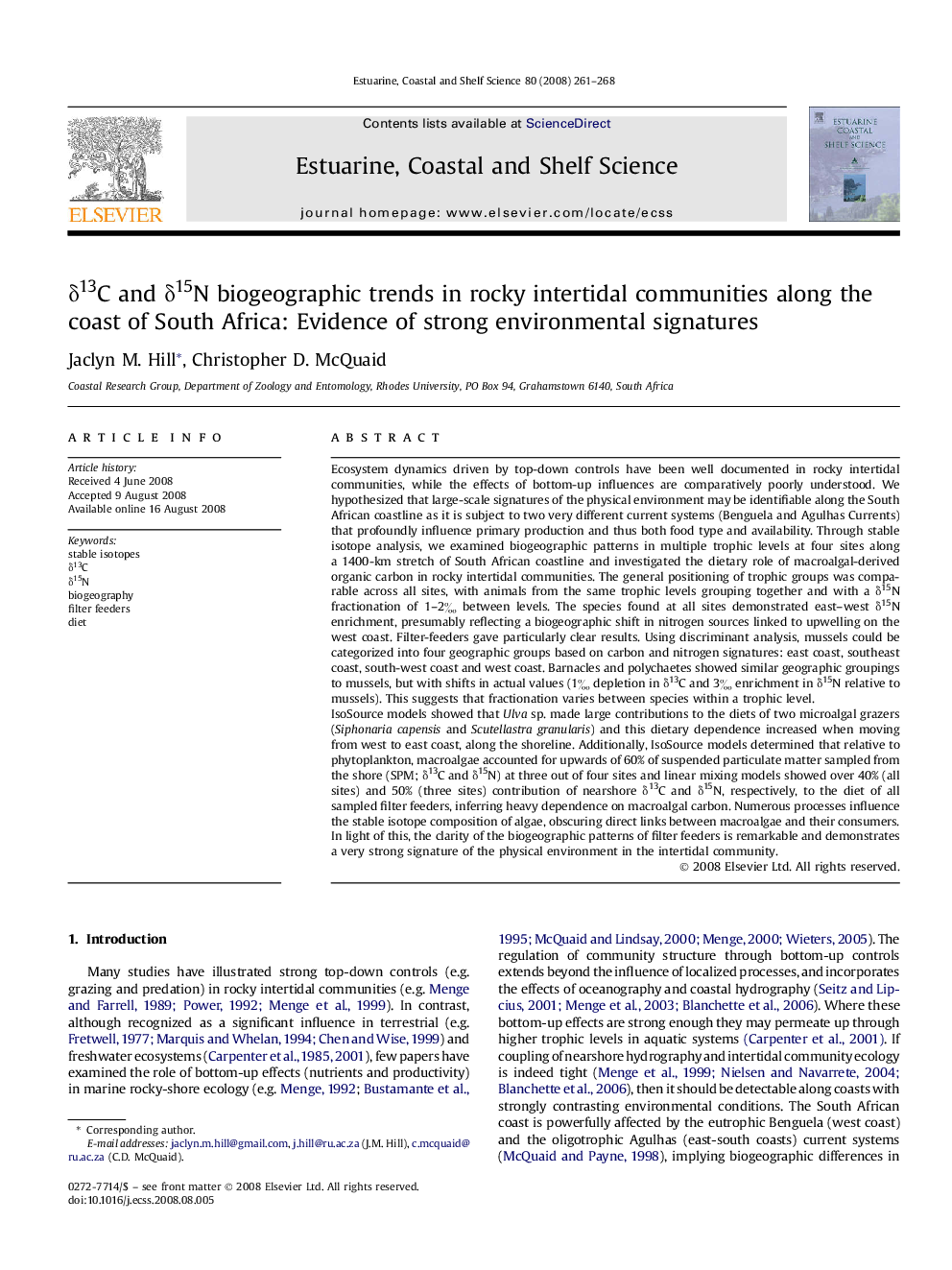| کد مقاله | کد نشریه | سال انتشار | مقاله انگلیسی | نسخه تمام متن |
|---|---|---|---|---|
| 4541686 | 1326735 | 2008 | 8 صفحه PDF | دانلود رایگان |

Ecosystem dynamics driven by top-down controls have been well documented in rocky intertidal communities, while the effects of bottom-up influences are comparatively poorly understood. We hypothesized that large-scale signatures of the physical environment may be identifiable along the South African coastline as it is subject to two very different current systems (Benguela and Agulhas Currents) that profoundly influence primary production and thus both food type and availability. Through stable isotope analysis, we examined biogeographic patterns in multiple trophic levels at four sites along a 1400-km stretch of South African coastline and investigated the dietary role of macroalgal-derived organic carbon in rocky intertidal communities. The general positioning of trophic groups was comparable across all sites, with animals from the same trophic levels grouping together and with a δ15N fractionation of 1–2‰ between levels. The species found at all sites demonstrated east–west δ15N enrichment, presumably reflecting a biogeographic shift in nitrogen sources linked to upwelling on the west coast. Filter-feeders gave particularly clear results. Using discriminant analysis, mussels could be categorized into four geographic groups based on carbon and nitrogen signatures: east coast, southeast coast, south-west coast and west coast. Barnacles and polychaetes showed similar geographic groupings to mussels, but with shifts in actual values (1‰ depletion in δ13C and 3‰ enrichment in δ15N relative to mussels). This suggests that fractionation varies between species within a trophic level.IsoSource models showed that Ulva sp. made large contributions to the diets of two microalgal grazers (Siphonaria capensis and Scutellastra granularis) and this dietary dependence increased when moving from west to east coast, along the shoreline. Additionally, IsoSource models determined that relative to phytoplankton, macroalgae accounted for upwards of 60% of suspended particulate matter sampled from the shore (SPM; δ13C and δ15N) at three out of four sites and linear mixing models showed over 40% (all sites) and 50% (three sites) contribution of nearshore δ13C and δ15N, respectively, to the diet of all sampled filter feeders, inferring heavy dependence on macroalgal carbon. Numerous processes influence the stable isotope composition of algae, obscuring direct links between macroalgae and their consumers. In light of this, the clarity of the biogeographic patterns of filter feeders is remarkable and demonstrates a very strong signature of the physical environment in the intertidal community.
Journal: Estuarine, Coastal and Shelf Science - Volume 80, Issue 2, 10 November 2008, Pages 261–268